It’s no longer possible to buy a new compact-sized truck. The smallest new trucks are mid-sized and the interesting thing about that is they’re very close to being full-sized.
Relative to the size full-size trucks used to be before they got super-sized.
The GMC Canyon extended cab (there is no regular cab version) is 212.4 inches long. A “full-size” 1995 Chevy C/K 1500 (regular cab) was only 194.5 inches long.
It also came standard with a 160 horsepower 4.3 liter V6. The new Canyon comes standard with a 2.5 liter four that makes 200 horsepower – the same power as the ’95 truck’s optional 5.7 liter V8.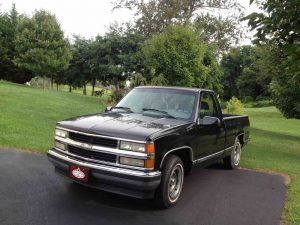
The ’95 didn’t come standard with AC, either.
Carpet cost extra.
What It Is
The Canyon is the GMC-badged version of GM’s mid-sized pick-up truck, which is also sold under the Chevy Badge as the Colorado.
Both are mechanically the same but have different exterior styling/interior layouts, with the GMC being the “nicer” – and somewhat pricier – version.
The base Elevation trim with an extended cab, the 2.5 liter engine paired with a six-speed automatic and rear-wheel-drive stickers for $26,400. Four wheel drive is available with this engine. 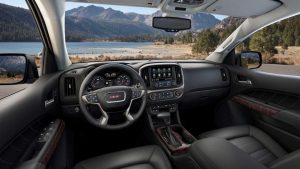
You can also upgrade to a 3.6 liter V6 engine – which comes paired with an eight-speed automatic.
A top of the line Denali crew cab with the optionally available 2.8 liter turbodiesel engine and 4WD lists for $48,130.
The main functional difference between this truck and current full-sized trucks is the Canyon is not available with an eight-foot bed (a 5.1 foot bed is standard; the “long” bed is 6.2 feet) or a two-door/regular cab.
The same’s true of all the trucks in this class. If you want just a two-door truck – and an eight foot bed – you’ll have to move up a size.
Denali trims get a new face – grille/bumper treatment – based on the face of the just-redesigned 2021 full-size Sierra Denali pick-up.
The previous All Terrain trim has been replaced with a new-for-2021 AT4 trim, which includes M/S-rated 17-inch off-road tires, a one-inch lift, skid plates and a heavier-duty suspension, among other upgrades.
What’s Good
As affordable as full-size trucks used to be.
Multiple engine options.
Stout tow rating (up to 7,700 lbs. with the diesel).
What’s Not So Good
No two-door option.
Diesel only available with high-trim Crew cab versions.
Much less affordable than compact-sized trucks used to be.
One of the few things about this truck that’s small is its standard engine, a 2.5 liter four cylinder. But its 200 horsepower is large – historically speaking.
Back in the ‘90s, full-size trucks like the Chevy C/K 1500 maxed-out around 200 horsepower – with their optional V8s that were twice as large as the Canyon’s four – and used twice as much fuel.
Well, maybe not quite that.
The ’95 C/K 1500’s optional 5.7 liter V8 got 14 miles to the gallon in city driving and 19 on the highway. The ’21 Canyon with the 2.5 four rates 19 in city driving and 24 on the highway.
Of course, it also only pulls 3,500 lbs.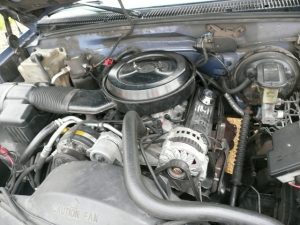
But, that can be remedied.
The Canyon’s next-up engine is a 3.6 liter V6 that makes 308 horsepower and that doubles the truck’s towing capacity to 7,000 lbs. – with a negligible increase in appetite. The 2WD version rates 18 city, 25 highway; with 4WD it’s about the same: 17 city, 24 highway.
This version of the Canyon is also the hot rod of the bunch. It can get to 60 in about 6.9 seconds – a very speedy time for a truck.
There’s a third under-the-hood option, too.
GMC offers a 2.8 liter Duramax turbo-diesel engine that makes 181 horsepower . . . and 369 ft.-lbs of torque, which twist is comparable to that made by V8s twice the size – with twice the appetite.
Buy this one and your Canyon can pull a mighty 7,700 lbs. – the highest tow rating in the class.
It can also go about 30 miles on a gallon of fuel, once you’re up and rolling.
The Canyon drives like the full-size truck it almost is – or rather, would have been so categorized before “full-size” became super-sized.
This is a compliment – as well as a criticism.
The Canyon – and its Chevy badged almost-twin – feel solid and sturdy, which compact-sized trucks like my ’02 Nissan don’t.
They are also as easy to drive as full-size trucks used to be. And easier to drive and deal with than current full-sized behemoths have become. A 6ft 3 220 pound man (me) doesn’t feel ten years old and 100 pounds behind the wheel of this thing. You can reach the controls without using one of those grabby things old people use to get the coffee can off the top shelf.
You can get in without climbing in.
Or rather, long.
The shortest version – extended cab with the five foot bed – is just shy of two feet longer end to end than a ’95 C/K 1500 regular cab. That is a lot of truck. A crew cab – 224.6 inches long – is two-and-half-feet longer. That is also as long as a 1970 Buick Electra 225, the famous “deuce and a quarter,” which was pretty much the longest car GM ever sold.
You will need maneuvering room.
But you’ll have no worries powering your way out of most situations. The four cylinder Canyon is quicker than a ’95 C/K 1500 with the V6, the latter needing just over ten seconds to achieve 60 while the GMC gets there in just over 8 seconds – almost exactly as quickly as the V8-powered version of the ’95 C/K 1500.
With the V6, the only new truck that’s quicker is a super-sized truck. But – arguably – the best engine this truck offers (uniquely, in the class) is the available 2.8 liter turbodiesel four, which comes with an exhaust brake – enhancing the big rig feel (and sound) without actually having to deal with a too-big rig.
This engine is also an interesting engine in that while it’s a diesel it’s not exclusively a low-RPM engine, as diesel engines historically have been. It can spin to 5,000 RPM – about the same redline as the ’95 C/K 1500’s V8 – while also making more torque (369 ft.-lbs. at 2,000 RPM) than the ’95’s 5.7 V8 (310 ft.-lbs. at 2,400 RPM).
And the Canyon’s got a more favorable power-to-torque ratio.
It weighs about the same as the ’95 C/K 1500 (around 4,100 lbs.) but has almost 70 ft.-lbs. of torque more than the Chevy’s V8 had to move that weight. It is also capable of almost 30 MPG on the highway, which is how you justify spending the $3,730 extra it costs to add the diesel package – which includes a heavy-duty transmission, cooling and other upgrades – to your Canyon. That and the ability to pull an almost 8,000 pound trailer, which is enough to easily – as opposed to marginally – pull a 5,000 pound RV or a pair of jetskis/ATVs.
But – here’s the catch – GMC doesn’t let you buy this engine unless you also buy four full-sized doors. If you want to roll coal, you’ll have to buy the higher-priced crew cab.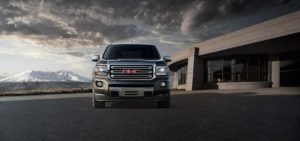
At The Curb
This is a long truck – but it’s not available with a long bed. Or two doors. You can choose two smaller additional doors – the extended cab.
Or four full-size doors.
Which explains why you can’t choose anything longer than a six-foot bed. Add two more feet to this truck and you’d need tugs to maneuver it.
So what you have here is an almost-full-size truck with a bed that’s still the same size as a compact pick-up’s bed. But – for once – this isn’t because of government fatwa’ing. It appears that most of the people who buy pickups want an extended or crew cab and aren’t pining away for an eight-foot bed, which would proportionately fit a truck this size if it had a two-door regular cab ahead of it.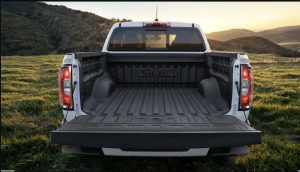
On the upside, the Canyon’s bed is a little wider than a compact pick-up’s bed and you can use a bed extended or just keep the tailgate down to haul the stuff that would fit in an eight-foot bed with the gate closed.
It’s also much easier to get at – and into – the Canyon’s bed than current super-sized (and super tall) pick up truck beds. They come with step ladders built into their tailgates for a reason.
Canyons come standard with full-size truck legroom – 45 inches – for the driver and front seat passenger, complemented by 41.4 inches of headroom. To put this in context, a compact-sized pick-up such as my ’02 Nissan Frontier has 41.3 inches of legroom and 39.3 inches of headroom. The back seats in my truck are also jump seats – folded up against the sides.
It is almost impossible for an adult to sit back there – and hard to get back there.
In the Canyon, you’ve got real back seats – facing forward – and even the extended cab has a viable 28.6 inches of legroom. The crew cab has 35.8 inches – as well as underseat storage cubbies. It really can seat five grown men comfortably. My Nissan can seat two comfortably; the other three will have to ride uncomfortably . . . in the bed.
Even with four doors trucks like my ’02 Frontier were too small for families or anyone who needed to regularly carry two or three passenger. Which probably explains why no one makes trucks the size of my ’02 Frontier anymore.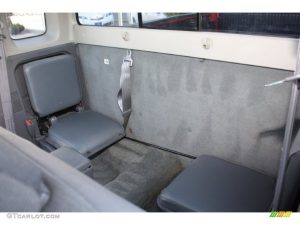
Another thing no one makes anymore is a basic truck. Which is why trucks have become so expensive. The base Elevation trim includes a power driver’s seat, 7-inch touchscreen, cruise control, power windows and locks, AC (of course) as well as an automatic transmission. My ’02 came standard with manual roll-up windows, a manual transmission and no touchscreen.
Which is why it stickered for $14k when it was new and the new Canyon stickers for $26k.
$31,800 if you want 4WD.
But that’s still a relative bargain compared with what a new super-sized truck will cost you – especially if you want a 4WD super-sized truck. The base trim GMC Sierra – the Canyon’s much-bigger brother – stickers for $33k and change to start, without 4WD.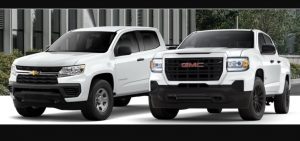
With 4WD, you’re just under $37k.
The Rest
The Canyon’s competition has gotten tougher.
The new Ford Ranger – which came out just two years ago – comes standard with a torque and horsepower-rich 2.3 liter turbocharged four cylinder engine (270 hp and 310 ft.-lbs. of torque, nearly as much as the GMC’s optional diesel) for just $24,820 to start and it can pull almost as much (7,500 lbs.) without costing you extra.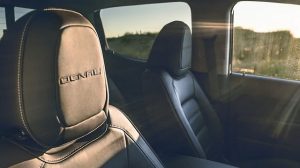
Nissan now includes a very strong (310 horsepower) 3.8 liter V6 with every (new) Frontier pick-up – and for $26,790 to start – which is only a few hundred bucks more than the base price of the four cylinder Canyon.
You can buy a 4WD-equipped V6 Frontier for $29,680 – about $2k less than the price GMC charges for a similarly outfitted V6/4WD Canyon.
You could also buy a V6/4WD Toyota Tacoma for $31,875.
In the GMC’s defense, it’s still the only truck in the segment that offers a diesel and the capability to pull nearly 8,000 pounds (the V6 Frontier’s maximum tow rating is 6,720 pounds; the Tacoma can pull a maximum of 6,800 pounds).
It’s also – nominally – the “nicer” truck – especially vs. its Chevy-badged twin, the Colorado – which is oriented more toward work and off-road work than luxury. The Colorado isn’t available with anything like the GMC’s Denali trim – which comes with 20-inch “diamond cut” wheels, special leather seats and ashwood trim. But the GMC is available with similarly serious off-road gear, if you buy the AT4 version – which is functionally similar to the Colorado ZR2 . . .
Just nicer.
The Bottom Line
If you’re not ready to say, super-size me! – a truck this size could be just the right size.
Provided you don’t need to cart a stack of 4×8 sheets.
. . . .
Got a question about cars, Libertarian politics – or anything else? Click on the “ask Eric” link and send ’em in!
If you like what you’ve found here please consider supporting EPautos.
We depend on you to keep the wheels turning!
Our donate button is here.
If you prefer not to use PayPal, our mailing address is:
EPautos
721 Hummingbird Lane SE
Copper Hill, VA 24079
PS: Get an EPautos magnet or sticker or coaster in return for a $20 or more one-time donation or a $10 or more monthly recurring donation. (Please be sure to tell us you want a magnet or sticker or coaster – and also, provide an address, so we know where to mail the thing!)
My eBook about car buying (new and used) is also available for your favorite price – free! Click here. If that fails, email me at [email protected] and I will send you a copy directly!




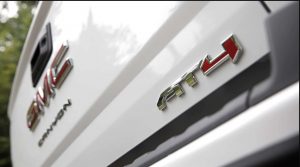
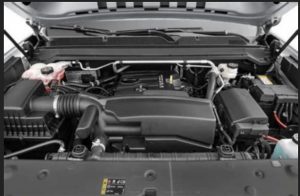
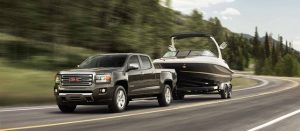
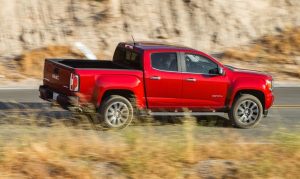








We can only imagine how wonderful new trucks would be if all the engineering applied to satisfy the Psychopaths In Charge was redirected toward actually making trucks better and/or cheaper. The more complex a machine is, the more likely it will fail. Which is not a good thing if you’re 5 miles from the road.
Indeed, JWK –
We can get an idea by reflecting on just how good trucks were in the mid-1990s. I remember driving a Chevy 1500 with a TBI 350 and five-speed manual. What a pleasure to drive and it was capable of almost 30 on the highway,if you kept it under 70.
I often think about what a compact-sized truck like my ’02 Frontier would be like with a small diesel engine and a six-speed manual. It would be capable of pulling 5,000 lbs. and get better mileage than most current “economy” cars.
Just a sampling…
My son was opining that he couldn’t figure out why anyone would buy a Colorado/Canyon. We happened to be out in my 01 Sierra 1500. In the restaurant parking lot, there was a shiny new Canyon, so I parked the Old Guy next to it. On our way in, I told him to turn around and look at the two trucks.
“They’re about the same size.”
Exactly, son, exactly. Now, if only the new one was as affordable as the old one, and didn’t have all the pre-installed nags on it. And I wasn’t retired and had more money. Guess me and the Old Guy will be hangin’ a good while longer.
Such a nice looking truck, if you like butt ugly.
Nothing can compare to the recent years of Dodge pickup trucks, 2017 to the current 2021 model, it is a runaway can’t catch them in styling and design.
For the price of used Dodge Ram 2017 1500, you’ll be far better off buying the Dodge.
In other words, forget Ford and GM.
These pretty much are full size everywhere except the width. Considering you’re actually likely to leave the dealer spending less on a true full size I fail to see the purpose of these.
The current “full size” trucks are just ridiculous. Aside from being large, they a have huge front profile for no reason other than styling — to make them look even bigger than they are.
The 250/2500 size is almost standard now, as is 4WD. Although statistically zero of them will ever go off-road, and few will even see dirt roads, the seats are six-eight inches higher, for what is effectively a single inch increase in ground clearance.
Exactly,Craig!
I lobe trucks; I own/have owned trucks. But the current crop of 1500s strike me as almost cartoonishly silly. And I’m a big guy. How guys who aren’t 6ft 3 deal with the bedwall height alone baffles me…
High bedwall and tailgate height is certainly a PITA to me too. I’ve been driving half tons for almost 30 years and I noticed around 10-15 years ago the beds started getting higher and higher. This is a problem for me since I’m only 5-7 and loading a dirbike, which I do a lot, has become harder and harder. Even dropped a bike recently and it’s ugly when you’re half way up. Dented the top rail of the bed too.
GM was the last to raise them, but now they all are. My current fix is Ram’s air-ride suspension which can lower the truck to almost the bump stops, they call it exit mode. Loading height is now back to about 10-15 years ago, haha…., but I still look for strategic terrain to help even more cause I’m not getting any younger.
You can add a step too in front of the rear tire to be able to get small stuff in and out.
But to be fair the back seat area in crew cabs are so freaking big, I put almost all small stuff inside now. I think they had a competition to see who’s would be the biggest. In my new Ram with the rear seats up, you could sleep two, no hump either. Like I’ve been saying, the new 1500’s are now the land yachts of the 70’s, and at least the Ram rides almost as good as those old dogs did.
Hi Chris,
I marvel at the height of bedwalls in the new trucks. At 6 ft 3 I am probably taller than 90 percent of men and I have difficulty accessing the beds of these behemoths. The ladders and steps and such help, but it’s still awkward and for no good reason that I can see. My ’03 Nissan Frontier is a little small- but the new Canyon and its like are too big, while not being useful enough to compensate. I personally consider the ’90s-era half-tons, especially the Chevys with the TBI 350s and manual five-speeds, to be the high water mark of truckdom!
I’m with you on the 90’s trucks, about perfect for trucks being trucks.
I still have a ’99 2500 regular cab for our farm beater, and a 2001 K1500HD. Great truck that I had a few of…..1500 frame that you could get the 6.0L with a little beefier susp.
When I was driving 30K+ mi. a year, I was in an out of the things too much to count, so things like step in height mattered to this small guy, and the GM’s where always the lowest. Now that all are this way, I’ve learned to live with running boards that I’ve neve liked, but no choice now.
As for why? Good question. The lack of a hump in my new Ram maybe is part of the answer. Do they all have no hump now? I’m guessing that with all the new crap they put in these trucks, they couldn’t go any wider, so they went up?
Four-wheel drive is preferred on snow/ice covered roads. You have more control. Always use four-wheel drive in winter road conditions.
Will never own another vehicle without four-wheel drive.
‘The smallest new trucks are mid-sized and the interesting thing about that is they’re very close to being full-sized.’
In the western U.S., where vehicles can last for decades, compact pickups are still everywhere.
Evidently, owners like the compact format, even though they COULD trade up to a large ‘mid-size’ truck without any loss of gas mileage.
My veteran Frontier, a couple of years older than Eric’s, has a 6-foot bed, an extended cab, yet its wheelbase is only 116 inches and turning circle is under 37 feet.
With its 4WD drive train, it drives like a chunky farm implement — another feature you can’t get at any price in highly engineered current models.